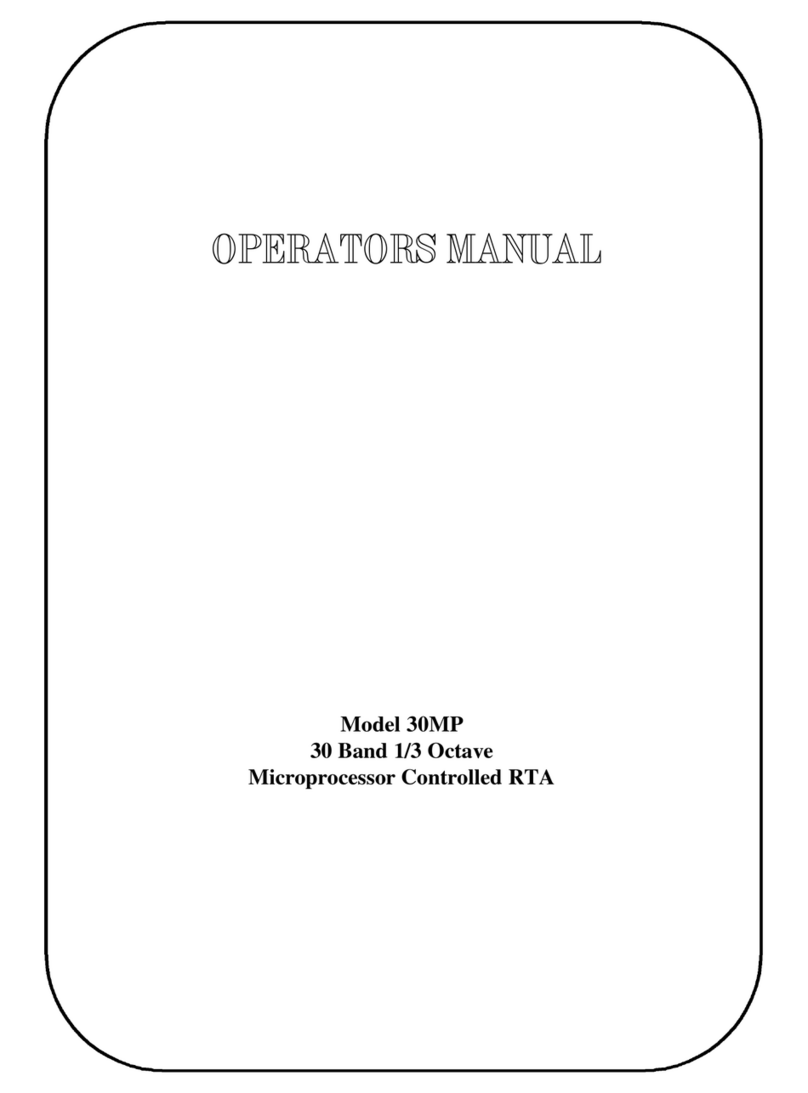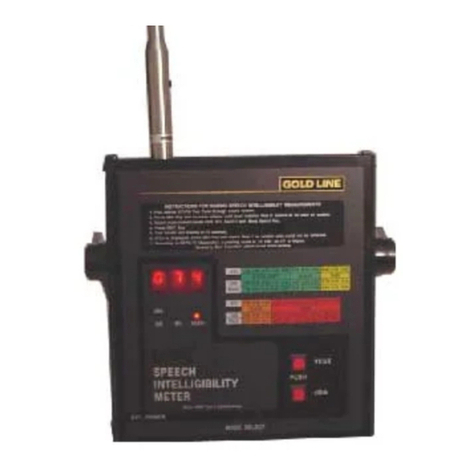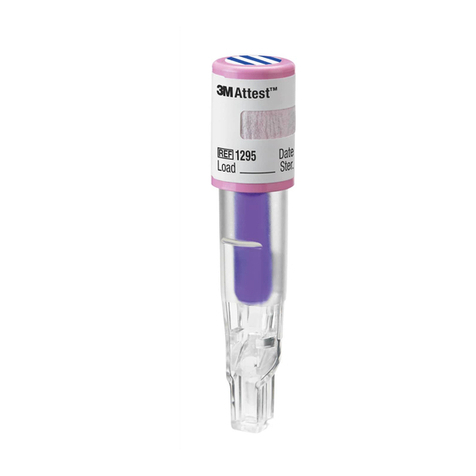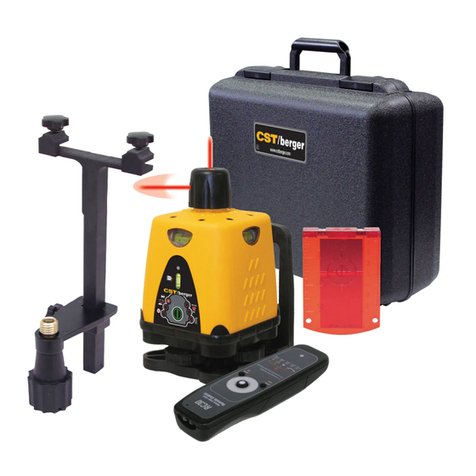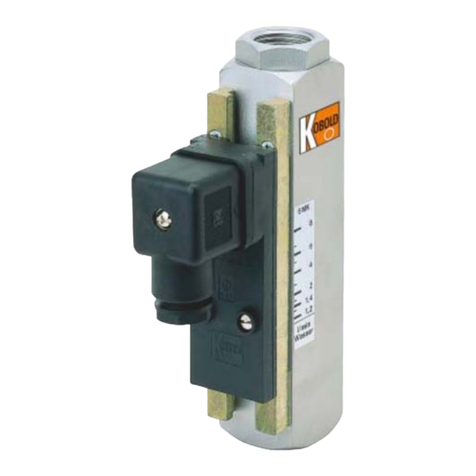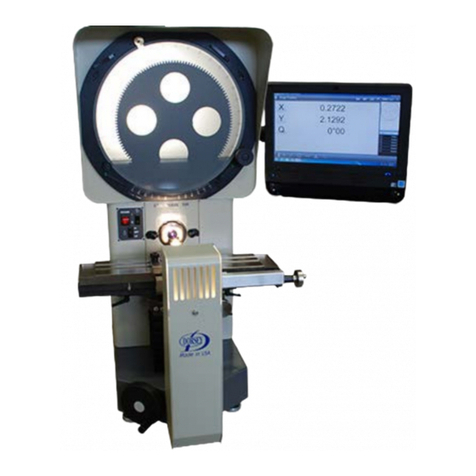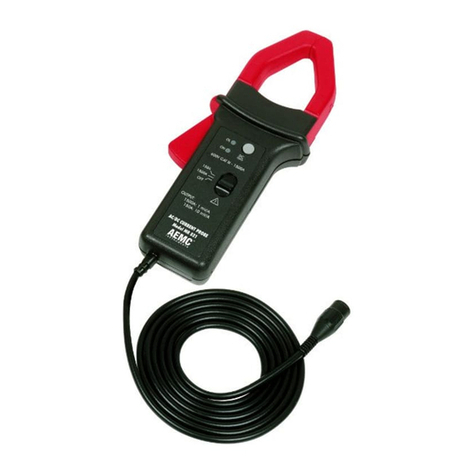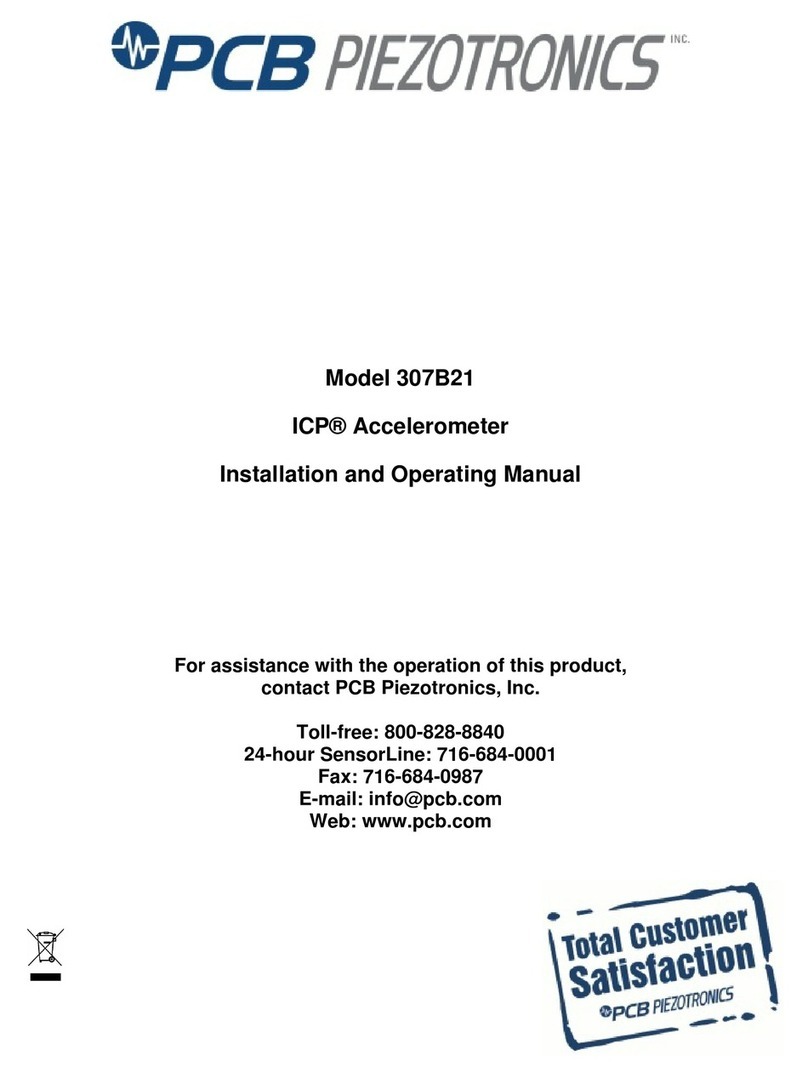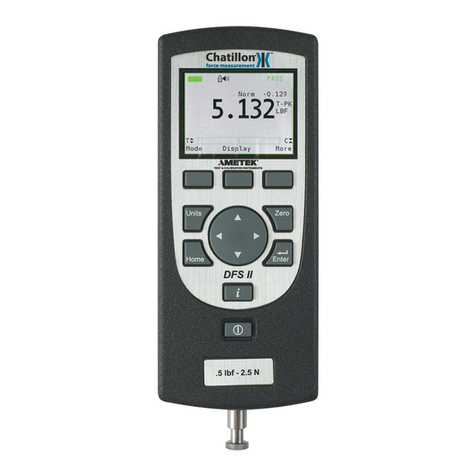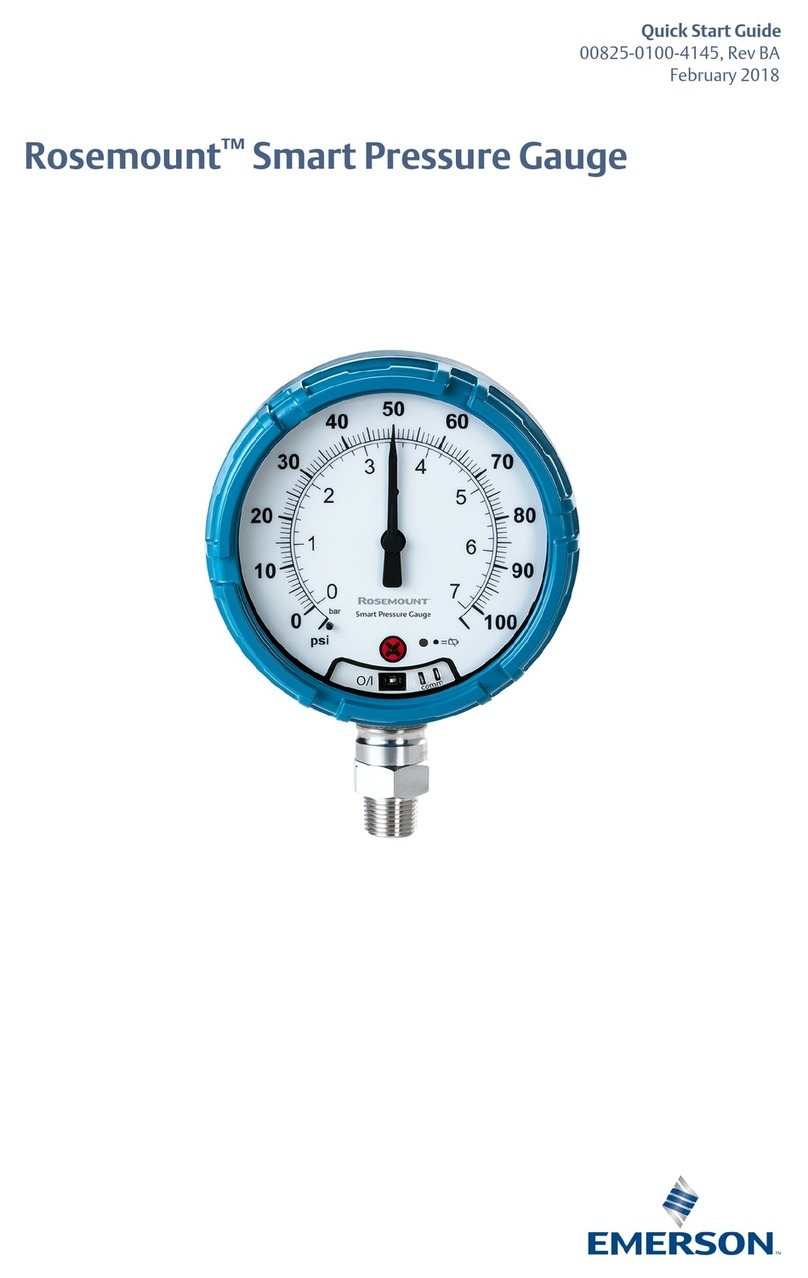Goldline ASA10B User manual

OPERATOR'S MANUAL
Model ASA10B
10 Band Audio Spectrum Analyzer

1
GENERAL:
The ASA10B is a ten band single octave battery operated portable audio spectrum analyzer complete with built-in
microphone, an accurate dB meter and will read Sound Pressure Levels in either "A" or "C" weighting.
Pink Noise: The ASA10B is often used in conjunction with a pink noise generator such as the Gold Line PN2.
Pink noise is a sound that has equal amount of energy per octave of bandwidth. By inputting pink noise to a sound
system you are certain that the system is receiving a flat signal source. Pink noise is the basic reference for all
measurements and adjustments to a system. Pink noise normally has a flatness of ±2dB with random waves that
may be higher or lower.
The Controls:
Input Range: In addition to turning the analyzer on and off, the INPUT RANGE switch can be set for 0dB, the
normal operating range or for -20dB which increases the maximum sensitivity setting from 75dB to 55dB. Keep in
mind that the displayed SPLs are actually 20dB below the INPUT SENSITIVITY switch setting when INPUT
RANGE is at -20dB.
Input Sensitivity: The input sensitivity of the ASA10B can be adjusted over a wide range to match many different
conditions and sound pressure levels (SPL). The sensitivity of the ASA10B is controlled with the INPUT
SENSITIVITY switch which provides five 10dB steps from 75dB to 115dB for a 0 reference indication.
Weight Curve: The ASA10B has three frequency response functions which are selected with the WEIGHT
switch. In FLAT, there is no shaping of the response curve. In "C", C type weighting is applied to the response
curve, and the 31.5Hz display channel is switched to broadband showing the overall level in dBC. In "A", A type
weighting is used, and the 31.5Hz channel shows overall level in dBA. "A" weighting is often used when making
speech interference measurements and "C" is often used for music and environmental noise measurements.
Decay Time: The DECAY switch provides three functions; FAST, SLOW and HOLD. In FAST, a response at 0dB
will fall to -10dB in from 2 seconds at 31.5Hz to 0.5 seconds or less at 500Hz and above. In SLOW, the same
response for 10dB is about 20 seconds at 31.5Hz, to about 6 seconds at 500Hz and above. The response to a
sudden increase in level, the attack time, is short in both FAST and SLOW. When monitoring music or speech,
and you want to see the rapid level changes, use FAST. When using pink noise, use SLOW for a more stable
display. HOLD is used to temporarily freeze the display.
The Display is a matrix of 100 LEDs: a column for each of the ten filter bands, and 10 LEDs in each column with
a linear scaling with turn-on thresholds at -15, -12.5, -10, -7.5, -5, -2.5, 0, + 2.5, +5, and +7.5dB. Each row of
LEDs has precise thresholds to ensure and accurate indication of sound energy in each of the bands. If using the
analyzer inside under bright lighting conditions, try to position the unit to minimize the effects of any light
reflections. Add some display shielding for measurements outside, but make certain not to block the microphone
in the end of the analyzer.
Line Input: This jack is for connecting line-level signals for analysis. A 0dB indication on the ASA10B will be
obtained from 0.069millivolts to 1.10V rms (-81dBm to +3dBm), depending upon the INPUT SENSITIVITY and
INPUT GAIN settings. The microphone is automatically disconnected with plug insertion. The input impedance
is 10kΩfor the ASA10B. The plug type is 3.5mm.
Power: The ASA10B is powered by eight AA batteries. The batteries can be either alkaline or NiCad. There is an
internal selector switch. Do not use any "regular" carbon-zinc types. At a nominal 12Vdc, the current drain is
about 40mA (milliamperes) with no LEDs on the display to about 80mA with an LED on each filter band. If the
ASA10B is to be used in a stationary position, it will be worthwhile to power the analyzer with an external supply
or battery eliminator, such as the Gold Line model BE1. (Source requirements: at least 240mA at 8-15Vdc, 12Vdc
nominal. Matching plug is 2.5mm) Alkaline batteries are disconnected when a battery eliminator is plugged in.
Nicads are kept in circuit and can be recharged in the case. Access to the batteries is gained by removing the four
screws holding on the back cover. Replacement (or NiCad recharging) is required when there is a noticeable drop
in the brightness of the LEDs in the display.

2
GENERAL GUIDELINES FOR USE
The sound energy in each of the ten octave bands is shown simultaneously and continuously - that is RTA or Real
Time Analysis. Many tests are most easily run using a pink noise source (Gold Line model PN2) which puts out
equal energy across each filter band. If it is fed directly to the unit the result will be a straight-line display. With
the pink noise fed through a sound system, any deviations from flat response will be shown on the analyzer. The
accuracy of a reading with pink noise will be improved by mentally averaging any level variations noted. Point the
analyzer at the speakers keeping it away from the body for best accuracy. If outside, or the room permits, keep at
least 20 ft. away at 31.5Hz, 10 ft. away at 63Hz, etc. Room effects may prevent following these guidelines. For
actual SPLs, switch the ASA10B to C/SPL, or A/SPL for levels in dBC or dBA weighting.
SOUND SYSTEM EQUALIZATION: Because the ASA10B has it's own built-in microphone, you can measure
the sound output from any type of sound source. The response will be shown in the ten filter-band display whether
the tests are made in a room, at a club, or even outdoors. The microphone of the ASA10B is positioned clear of the
end of the analyzer case to minimize shielding effects. The ½ inch microphone diameter of the ASA10B facilitates
checking SPL calibration with an acoustical calibrator. The ASA10B has been calibrated by the factory - but can be
field calibrated.
1. Turn off the sound system before making connections, and put all tone controls, EQ etc., to their flat positions.
Set volume to zero.
2. Connect the noise source to a line level input to one channel only.
3. Turn the amplifier system on.
4. Advance the volume to a medium-high sound level. Do not overdrive.
5. Set the ASA10B to SLOW decay time with low gain and turn it on.
6. Take a position in the center of the listening area.
7. Increase the gain of the analyzer to put the majority of the filter band responses near 0dB. Make certain the unit
is pointed at the speaker. Take note of the levels in each of the octaves.
8. In the lowest bands there can be great deviations from flat response caused by speaker and room characteristics.
Usually it is impossible to make the changes in room shape and size that might be desirable, but changes in
speaker position are usually quite feasible.
9. If inside, try different speaker positions along and up and down the back wall, and also try various distances
from the wall. Use the combination that gives the best result, i.e., the flattest response, especially at the low-
frequency end. Move around in the listening area to see if there are measurable room effects appearing in the
lowest filters. Make certain the sound level from the system is high enough to cover over the normal room ambient
noise.
10. The high-frequency response of the system will be greatly affected by the speaker's angular positioning-how it
is pointed back and forth and also up or down. Make such adjustments as necessary for maximum output in the
highest frequencies.
11. After completion of the above two steps, move around in the listening area while observing the analyzer
display. Take note of any large shifts in the response. Use the HOLD function to make comparisons.
12. Adjust the systems equalizers, tone and tweeter controls, etc., to obtain the flattest response in the listening
area. Do not try to boost out deep notches in the response, such as might be caused by a poor crossover. In general,
limit the amount of boost used in order to prevent overdriving amplifiers and speakers. Do use cut to bring down
peaky areas. To the extent possible, use tone controls or other broad, shelving-type EQ to minimize the need and
extent of narrow-band EQ.
13. Recheck system response with the analyzer, and trim adjustments for the best compromises over all the bands
and all-important listening areas.
14. Repeat steps 6 to 13 for the other channels.
15. With both channels driven equally (balance control centered) touch up low frequency EQ for flat performance
up to 250Hz.
16. The liveliness of a room will have an effect on the system response, primarily in the medium and high
frequencies. Rugs, stuffed furniture, drapes and people are all absorbers of sound, and acoustically dead rooms
require more sound from the speakers, with a need for more boost of medium/ high frequencies.
17. CAUTION: Do not use extreme amounts of bass boost with small speakers. Destruction could be the result.
Try to find the best speaker to wall distance to minimize the need for the boost.

3
ELIMINATING FEEDBACK
1. Feed pink noise into a system line input, and set the gain for a medium-high level from the speakers.
2. Turn up gain on the main microphone input until feedback just starts.
3. With the analyzer, look for evidence of one filter band peaking above all of the others. Increase the gain if
necessary.
4.Adjust the equalizer to put in just enough cut in that band to stop the feedback. A parametric EQ should be set at
minimum bandwidth.
5.Increase the gain and continue to trim the EQ to control feedback.
6.When a second feedback frequency appears, use the analyzer to determine the adjustment needed. Increase gain
further, and continue to trim the EQ.
7.When there is feedback appearing at three or more frequencies with further increases in gain, the practical limit
of feedback control with minimum effect on the music has been reached. The adjusted system will have higher
output and will be easier to operate.
8.Open any other mikes that will be on at the same time, and change settings as necessary for best overall
performance.
9.For the final adjustment, performers should stand at the microphones in normal performing position as their
proximity can cause some shift in feedback modes.
TAPE RECORDER ALIGNMENT
1. Clean and demagnetize all heads.
2. Connect one channel of the recorder output to the analyzer EXT (AUX) LINE IN. Turn the analyzer on with
decay-time switch on SLOW.
3. Play a pink-noise alignment tape (This must be of high quality!) with the recorder monitor switch on Tape.
Adjust analyzer gain and/or recorder output level for a display at 0dB.
4. Following the recorder manufacturer's instructions, adjust the azimuth of the play head for maximum output in
the 16kHz channel.
5. If the display is erratic, check for proper tape wrap and head tilt. Adjust if necessary and repeat azimuth check.
6. If there are play equalization adjustments, make these while observing the effects on the levels in all ten filter
channels.
7. Change output connections and check alignment on other tracks.
8. Make play equalization adjustments similarly for all other tracks.
9. Repeat steps 2 to 8 for other tape speeds if necessary.
10. If a pink noise alignment tape is not available, a discrete-tone test tape can be used, although it will be less
convenient. Just use whichever analyzer channel covers the tone on the tape.
11. Select tape type and length most frequently used, and set the bias and EQ switches to correspond. Select tape
speed.
12. Feed pink-noise to the recorder line input. Set record level to -10 VU for open-reel recorders at 7½ ips and to
20dB below Dolby reference level for cassette decks.
13. If the unit is a three-head machine, record the pink noise, and simultaneously monitor the playback output with
the analyzer. First, adjust the record head azimuth for maximum output in the 16kHz band. If the bias is
adjustable, reduce it to near minimum and then increase it slowly. Stop where the outputs in the 500Hz and 1kHz
bands reach a maximum. Trim the high-end response with record equalization, if possible. A fine bias adjustment
can be made to get the best overall record/playback response.
14. Check the results on other tracks, making necessary adjustments.
15. Repeat adjustments for other tape speeds and tape types, if need be.
16. If the recorder is a two-head unit, the approach is similar, but it is necessary to record, rewind and play after
each adjustment is made. Make small changes to facilitate removing any errors made.
17. If the heads are worn, the responses may be down noticeably at 16kHz. Even so, you will still want to adjust
the heads for the maximum output. However, Bias and EQ adjustments will provide limited correction in this case.
Do not reduce bias so much as to decrease the 500Hz level (and increase distortion) in an effort to try to force the
high end up.
18. You will find that alignment with the analyzer and pink noise is much faster and better than other methods.
Dolby tracking is also very easy to check with the analyzer.

4
OTHER EQUIPMENT TESTS: By using the line input capability of the analyzer, sometimes in combination
with measurements with the microphone, it is possible to pin down the response of tone controls and equalizers
before feeding to the loudspeakers. Looking at the output of preamps, mixers and other line level devices is very
easy with the ASA10B analyzer. It is also possible to connect the analyzer to the output of a power amplifier, but
BE CAREFUL! First of all, make any connections with the power amplifier turned off. Make certain that the
amplifier, or the control section feeding it, is set to minimum gain. Power amplifiers can put out voltages that are
much higher than the maximum level handled by the analyzers, so extra caution is in order. Set the analyzer
sensitivity to minimum; increase amplifier gain very slowly until the display is close to 0dB, where further
adjustments can be made.
SPECIFICATIONS
MEASUREMENT RANGE: Microphone input : 40dB - 122dB SPL
Line input: -81dBm to +3dBm
(.069mV to 1.10V rms)
INPUTS: Microphone: Built-in omnidirectional electret condenser.
Line: Unbalanced 3.5mm jack. 10kΩ impedance
SENSITIVITY SWITCH: 5 position 10dB / step attentuator .
INPUT RANGE SWITCH: 0dB or -20dB
CENTER FREQUENCIES (Hz): ISO 31.5, 63, 125, 250, 500, 1k, 2k, 4k, 8k,16k
CENTER FREQUENCY ACCURACY: Typically ±3%
FILTERS: ANSI Class II
RELATIVE FLATNESS CHANNEL TO CHANNEL: ±1.0dB
WEIGHTING: IEC A, C and FLAT.
DECAY RATE @ 500Hz: SLOW 2.2dB/s, FAST 18dB/s. HOLD for short duration
display freeze.
POWER REQUIREMENTS: Batteries - Eight AA alkaline or nicad.
External - 12Vdc @ 240mA via 2.5mm jack
Internal switch must be set to NICAD when recharging NICAD batteries.
SIZE (W x H x D); WEIGHT: 3¼" x 8" x 2¼"; 12 oz.
CASE MATERIAL: High impact ABS
Enter your serial#_______________ date of purchase________________
10-68 m_10b_2h22.doc
WARRANTY and Factory Service
GOLD LINE products are proudly made in the USA and are covered by a one year limited warranty. For details of this
warranty, consult the enclosed warranty registration card or your local dealer.
GOLD LINE Customer Service will help you get the most from your new analyzer. For answers to questions regarding use of
the unit, or for information not covered in this manual, please write us. If you are experiencing difficulties with your analyzer,
please consult your dealer regarding factory service. If factory service is needed, you may call or fax us between 9:00am and
4:30pm US Eastern Time for instructions and a return authorization.
Box 500 West Redding, CT. 06896
203-938-2588 phone - 203-938-8740 fax
http://www.gold-line.com Email - [email protected]
Table of contents
Other Goldline Measuring Instrument manuals
Popular Measuring Instrument manuals by other brands
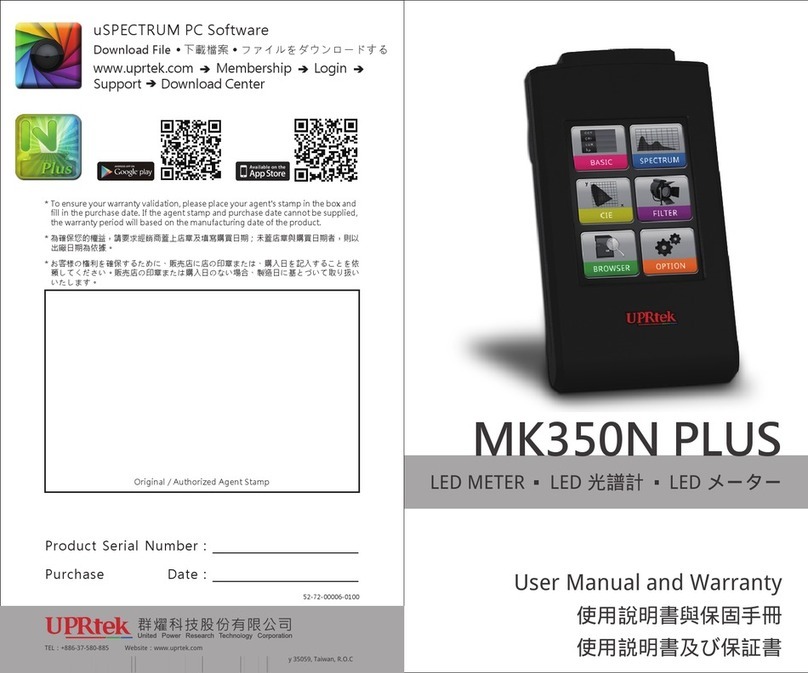
UPRtek
UPRtek MK350N PLUS User manual and warranty

Fox Thermal Instruments
Fox Thermal Instruments FT3 user manual
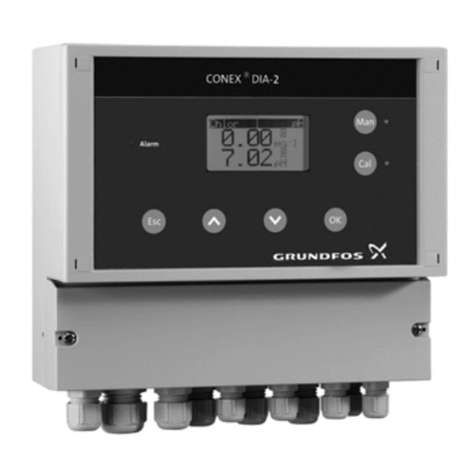
Grundfos
Grundfos Conex DIA-2 Installation and operating instructions
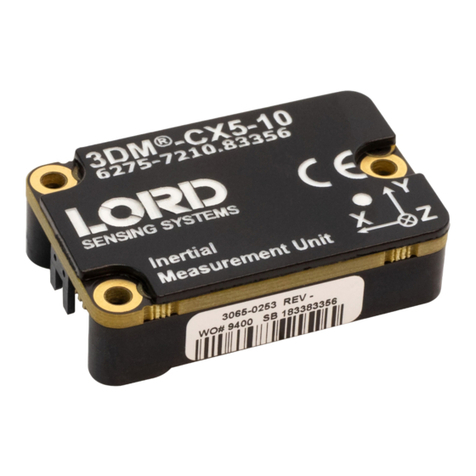
Lord MicroStrain
Lord MicroStrain 3DM-CX5-10 user manual
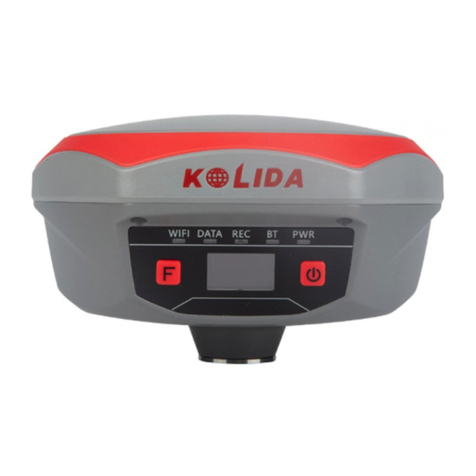
Kolida
Kolida K1 Pro user guide
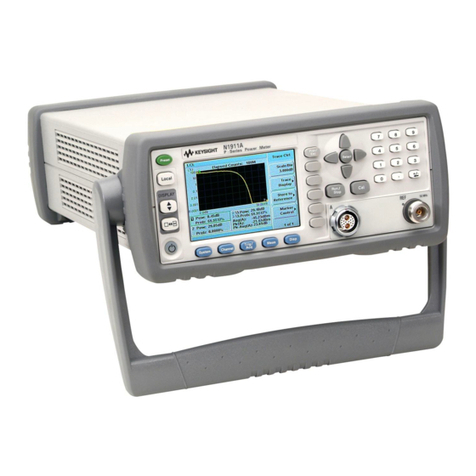
Agilent Technologies
Agilent Technologies N1911A user guide
